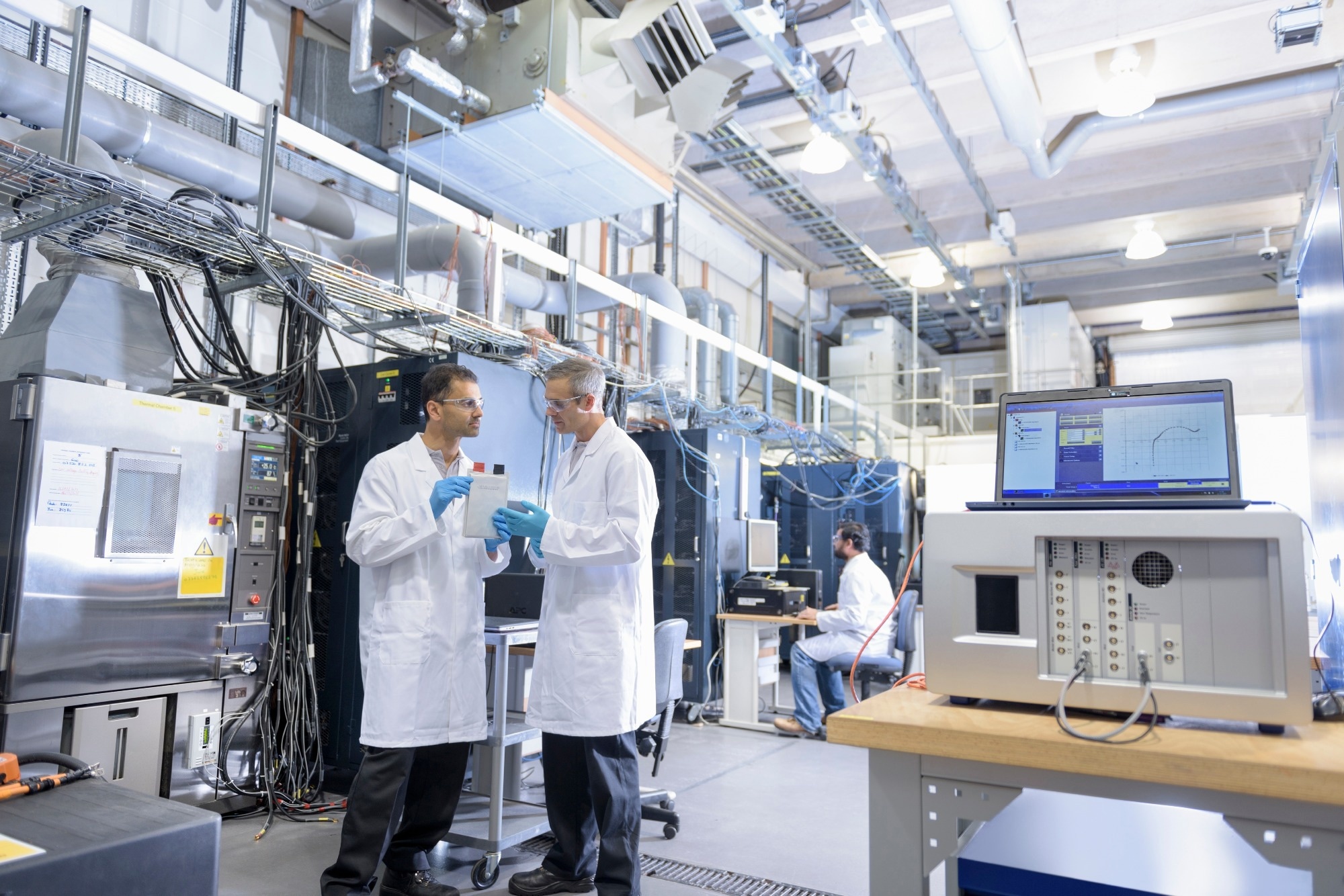A recent article in Nature Energy evaluated the interlaboratory reproducibility and comparability of all-solid-state battery (ASSB) performance across 21 research groups. The study utilized commercial battery materials, including LiNi0.6Mn0.2Co0.2O2 (NMC 622) as the cathode, Li6PS5Cl (LPSCI) as the solid electrolyte (SE), and indium as the anode.

Image Credit: Connect Images - Curated/Shutterstock.com
Background
With the growing academic and commercial interest in ASSBs, performance benchmarking has become crucial. Although the feasibility of producing solid-state pouch cells has been established, most ASSB studies rely on data from press cells, which consist of a solid electrolyte separator sandwiched between active materials, pressed between metal stamps.
However, the absence of standardized ASSB cell setups has led to significant reproducibility challenges. For example, cells using the NMC 622 cathode, LPSCI separator, and In/(InLi)x anode demonstrate initial specific discharge capacities varying between 106 and 142 mAh/g at 0.1 C. Additionally, the capacity retention and cell impedance growth vary drastically, making it challenging to compare various reports directly.
These discrepancies stem from variations in morphology, material coatings, loading, cathode composition, cycling methods, compression pressures, temperatures, and cell configurations. This study aimed to assess interlaboratory reproducibility using data from 21 groups working on ASSBs.
Methods
Each participating group received an LPSCI solid electrolyte, single-crystalline NMC 622 cathode, and In/(InLi)ₓ alloy anode prepared from indium foil. Lithium metal was not supplied, and groups were instructed to use their own.
The phase purity of NMC 622 and LPSCI was confirmed using powder X-ray diffraction (XRD), while scanning electron microscopy (SEM) analyzed their morphology. The ionic conductivity of LPSCI was measured through potentiostatic electrochemical impedance spectroscopy (PEIS).
Reference lithium-ion battery coin cells were prepared to assess the specific discharge capacities of the NMC 622 cathode. The reference cathode consisted of polyvinylidene difluoride (PVdF), NMC 622, and Super C65. These cells underwent the same cycling procedures as the ASSBs, but without PEIS measurements.
Participating groups were instructed to assemble three ASSB cells using the provided components and cycle them according to the specified protocols. Prior to cycling, the open circuit voltage (OCV) of each cell was measured, followed by a PEIS measurement at the OCV.
Groups submitted raw data files containing time, current, voltage, and cycle number. From this data, polarization voltage, specific charge/discharge capacities, accumulated irreversible capacity, and specific energy densities were calculated.
The impedance data from the first, second, and 51st charging cycles were specifically analyzed to evaluate cell performance.
Results and Discussion
Despite the varying processing conditions, the reported thickness of all cells was consistent, highlighting the significant impact of the processing approach on the resulting battery microstructure and its electrochemical performance. Of the 68 cells tested, 39 (57 %) successfully cycled up to the 50th cycle and were classified as working cells.
The primary reason for failure was related to preparation issues (21 cells, 31 %), such as broken pellets, uneven cathode distribution over the separator layer, or high moisture levels in the glove box atmosphere. An additional five cells (7 %) failed during cycling due to issues like short-circuiting. A smaller subset (three cells, <5 %) failed due to human errors, such as accidentally unplugging a cell during cycling.
These findings underscore the challenges in preparing and handling ASSB cells, which contributed to the high failure rate. However, once cells achieved initial capacity, cycling them up to 50 cycles was relatively straightforward.
The initial polarization voltages of the cells varied considerably. Most ASSBs (69 %) exhibited low initial polarization voltages between 0.10-0.25 V, while the remaining cells showed values up to 0.7 V. This significant variation in electrochemical performance was likely due to differences in processing parameters across the participating groups.
Some cells were identified as best performers to analyze correlations between processing techniques and performance. Despite the diverse preparation methods, these top-performing cells shared commonalities in separator resistance, compression pressure between the separator and cathode, overall cell compression, and cycling pressure.
Conclusion
The researchers conducted a comprehensive analysis of interlaboratory comparability of ASSB cycling data across 21 groups using common cell components but distinct cell setups and preparation procedures. They identified four key processing conditions shared by the best-performing cells, highlighting the critical importance of reproducible cathode composite preparation for achieving consistent cell performance.
Significant variations were observed in cycling behavior, specific capacities, and voltages among the cells prepared by different groups, demonstrating the limited comparability of ASSB data from diverse setups. These findings emphasize the need for standardized measurements to enhance reproducibility and improve the comparability of ASSB performance across different research groups.
Journal Reference
Puls, S., et al. (2024). Benchmarking the reproducibility of all-solid-state battery cell performance. Nature Energy. DOI: 10.1038/s41560-024-01634-3, https://www.nature.com/articles/s41560-024-01634-3
Disclaimer: The views expressed here are those of the author expressed in their private capacity and do not necessarily represent the views of AZoM.com Limited T/A AZoNetwork the owner and operator of this website. This disclaimer forms part of the Terms and conditions of use of this website.